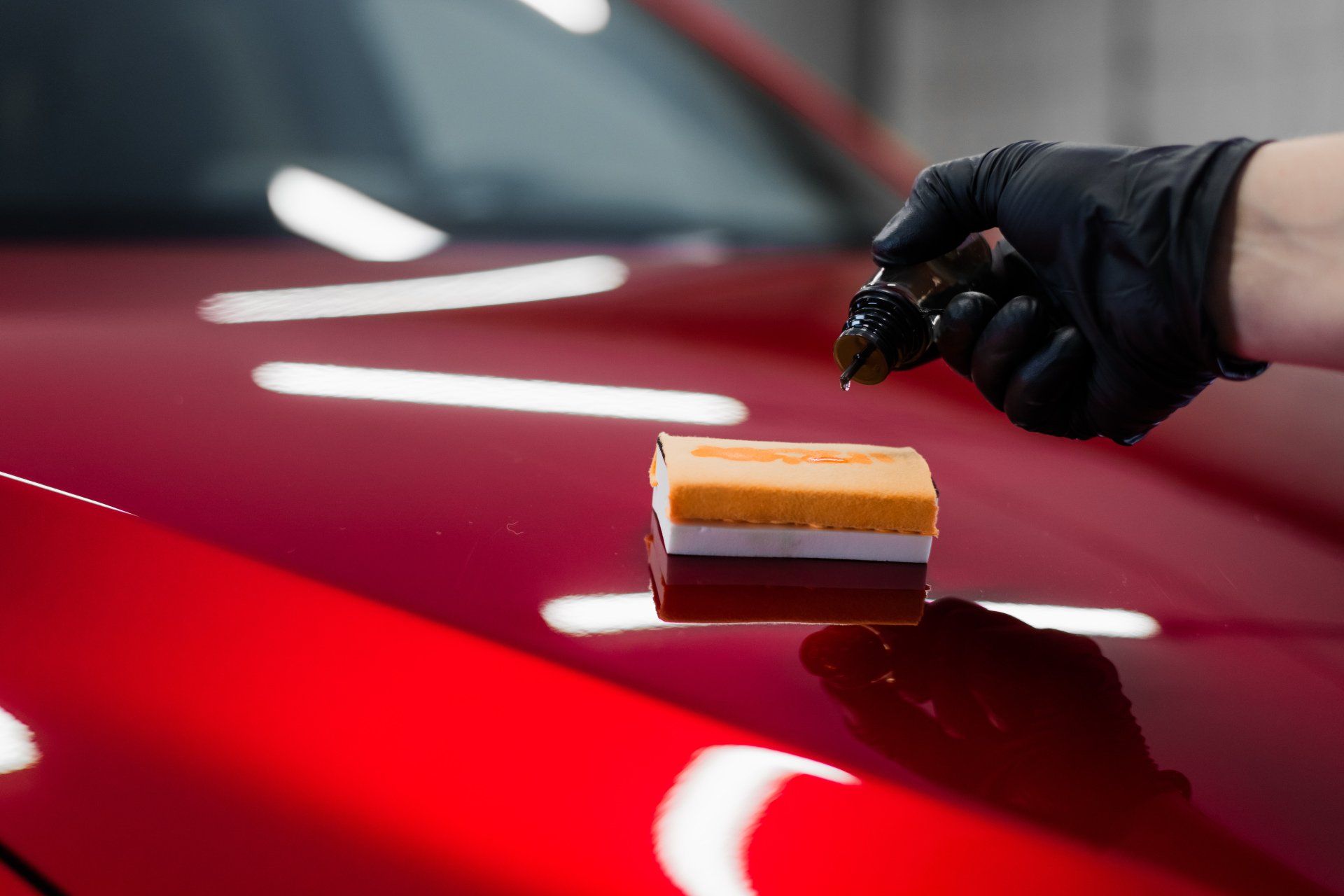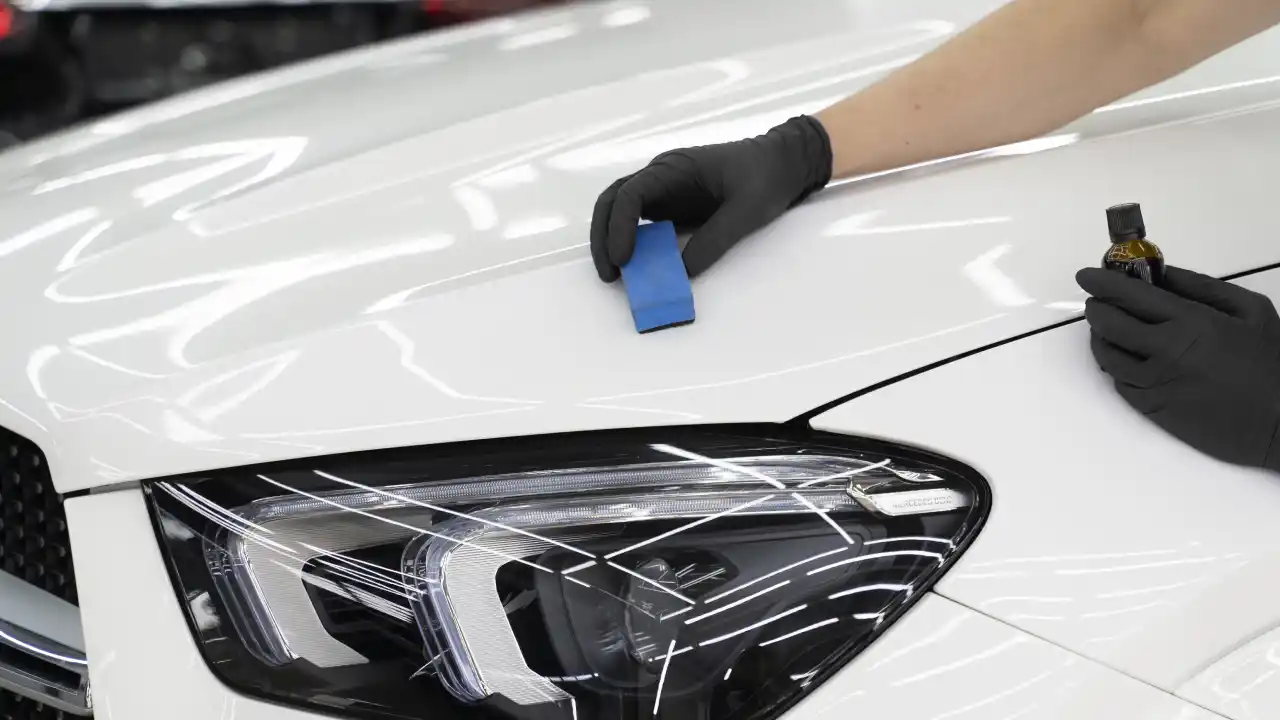Specialist Tips for DIY Ceramic Coating Application at Home
Specialist Tips for DIY Ceramic Coating Application at Home
Blog Article
The Importance of Ceramic Coating: Shielding Your Auto's Outside With Precision
In an era where preserving the practical and visual honesty of your lorry is critical, ceramic layer emerges as a critical remedy. With its unique bonding residential or commercial properties, ceramic finish offers a level of security that far exceeds typical waxing techniques.
Benefits of Ceramic Coating
When it comes to preserving an auto's aesthetic appeal, ceramic finishing uses substantial benefits. By developing a semi-permanent bond with the automobile's paint, ceramic coatings efficiently prevent oxidation and fading, guaranteeing that the cars and truck preserves a glossy, showroom-like finish for an extensive duration.
Along with its protective top qualities, ceramic finish uses impressive hydrophobic buildings, triggering water and other fluids to bead off easily. This function streamlines the cleaning procedure, as dust and particles are less most likely to adhere to the surface, lowering the frequency and initiative required for maintenance. The finishing's resistance to chemical stains from acidic pollutants like bird droppings and tree sap is an additional notable benefit, minimizing prospective paint damages.
Ceramic coverings additionally improve scratch resistance, providing a layer that can take in small abrasions and swirl marks. This characteristic is specifically useful in keeping an excellent surface area, minimizing the likelihood of visible blemishes and preserving the integrity of the auto's paintwork in time.

Just How Ceramic Covering Works
Recognizing the technicians behind ceramic covering exposes its effectiveness as a safety service for lorries. Ceramic coatings are essentially liquid polymer applications that chemically bond with an auto's manufacturing facility paint, creating a safety layer. This layer offers as an obstacle versus ecological contaminants such as dirt, ultraviolet, and gunk rays, which can weaken a car's exterior in time. The vital part in ceramic covering is silicon dioxide (SiO2), which originates from quartz crystals and is known for its remarkable hardness and resilience.
Application of ceramic finish includes a precise process. Initially, the car's surface must be thoroughly cleansed and decontaminated to ensure optimal adhesion. When applied, the fluid polymer develops a semi-permanent bond with the paint, hardening into a clear, resilient guard. This shield enhances the auto's gloss and hydrophobic residential properties, promoting simpler cleansing by triggering water and contaminants to grain and slide off effortlessly.
Furthermore, the coating's molecular structure gives resistance to minor scrapes and chemical discolorations. Unlike waxes or sealants that rest on top of the paint, ceramic finishes incorporate with the surface, using long-lasting protection. This assimilation is essential to its efficiency, ensuring the car's surface continues to be pristine for several years.
Comparing Ceramic Coating to Alternatives
In the world of automotive protection, ceramic finish stands as a powerful option when compared to conventional options such as waxes and sealants. While waxes provide a momentary glossy surface, normally lasting just a few weeks to months, ceramic finishes provide a longer-lasting solution, frequently enduring for years. This click this resilience is credited to the chemical bonding that occurs when ceramic coverings are used, forming a solid layer that is resistant to ecological hazards.
Contrastingly, sealers, although more durable than waxes, still drop brief of the durable defense supplied by ceramic coatings. Sealers can usually last for as much as a year, offering a synthetic shield against particular components. They do not have the remarkable hydrophobic residential properties and UV protection that ceramic coatings deliver.
Moreover, ceramic layers use enhanced scrape resistance, which neither waxes nor sealers can effectively match (ceramic coating). This is particularly beneficial in preserving an automobile's pristine appearance. In addition, ceramic coverings simplify maintenance initiatives by decreasing the adherence of dust and grime, therefore helping with easier cleansing. In recap, while conventional waxes and sealers provide standard protection, ceramic layers present a detailed, long-term option that significantly protects the lorry and enhances's outside coating.
Application Process Discussed
Applying ceramic layer to a lorry needs a precise process to make certain optimum outcomes and longevity. Once cleaned, the lorry is dried and polished to remove any kind of flaws, as any existing swirls or scratches can become extra obvious after the layer is used.
Following surface area preparation, the application of the ceramic coating starts. The finish is typically used in a climate-controlled environment to stop dirt particles from deciding on the newly cleaned surface area. Using an applicator pad, the ceramic layer is applied in tiny sections to make certain even protection. It is vital to follow the maker's guidelines pertaining to the suitable curing time and application density.
After application, the coating calls for a particular healing period, during which the automobile needs to be protected from water and pollutants. This curing process can differ relying on the item yet generally ranges from 24 to 2 days. Ultimately, this in-depth procedure is crucial in achieving a durable and glossy surface.
Upkeep Tips for Long Life
To maintain the longevity of a ceramic finishing, adherence to a regimented upkeep routine is important. Routine cleaning is extremely important; use a pH-neutral vehicle hair shampoo and soft microfiber gloves to stay clear of abrasions. Stay clear of automated car washes, as their extreme brushes can endanger the finishing's stability. Rather, decide for a hand wash to guarantee extensive yet gentle cleansing.
Post-wash, drying the automobile with a tidy microfiber towel avoids water spots that might break down the finish gradually. In addition, use a ceramic finish booster every few months. These boosters reinforce the hydrophobic residential properties and improve the finishing's protective abilities, guaranteeing it stays efficient against contaminants.
Keep in mind that parking areas play a critical role in maintenance. ceramic coating. Whenever possible, park in shaded areas to minimize UV direct exposure, which can gradually damage the layer. For long-lasting storage, think about using a car cover for included protection versus investigate this site environmental elements
Verdict
In final thought, ceramic layer offers as an important protective layer for automobile outsides, offering resilient protection i was reading this versus ecological factors such as dirt, uv, and gunk rays. Comprehending the application process and adhering to upkeep suggestions are crucial for making the most of the longevity and efficiency of ceramic finish.
When it comes to preserving a vehicle's aesthetic appeal, ceramic coating offers substantial advantages. By forming a semi-permanent bond with the vehicle's paint, ceramic coverings efficiently prevent oxidation and fading, ensuring that the car keeps a glossy, showroom-like surface for an extensive period. Ceramic finishings are essentially liquid polymer applications that chemically bond with a vehicle's manufacturing facility paint, developing a safety layer. In summary, while traditional waxes and sealers provide basic defense, ceramic layers offer an extensive, long-term remedy that substantially boosts and protects the vehicle's outside surface.

Report this page